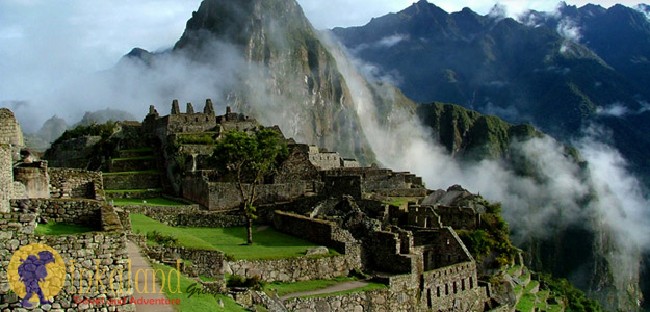History of Peru
PRE-HISPANIC PERU
Peru is one of the major original cradles of ancient cultures, together with Mexico, Mesopotamia, India and China. During Paleolithic times, Peruvian peoples started to develop hunter-gatherer villages towards 6000 b. C. and left their first remains in settlements such as Lauricocha in Huanuco. Towards 2500 b. C., agricultural settlements were formed and farming of manioc, lima beans, quinoa, potatoes, cotton and corn started. Peruvian history is divided in five stages until the arrival of Spanish conquerors:

• Early Horizon (1200 B.C. – 200 A.D.): In this period, small states were formed with elites wielding both economic and religious power. Chavín de Huántar (Áncash) belongs to this stage. It boasts a temple with internal chambers and halls, monochrome pottery and large megalithic art. Also remarkable are the urban settlements of Caral (Lima) and Sechín (Áncash).
• Early Intermediate Period (200 A.D. – 600 A.D.): At this time the large regional development centers left in the Andean world incomparable testimonies of their magnificence. Tiahuanaco (Puno) stands out for its chullpa tombs in Sillustani; Mochica and Lambayeque (La Libertad and Lambayeque) built the Lord of Sipán’s Royal Tombs and the Túcume pyramids; the Nasca and Paracas (Ica) peoples traced the mysterious Nasca lines in the desert and created admirable pottery and fine weavings.
• Intermediate Horizon (600 A.D. – 900 A.D.): Characterized by the expansion of the Wari culture in the Andean region. Its main vestiges are the Wari (Ayacucho), Pikillacta (Cusco) and Marca Huamachuco (La Libertad) citadels.
• Late Intermediate Period (900 A.D. – 1400 A.D.): The regional kingdoms or states developed in this time had well defined cultural features, as can be seen in their monuments, such as the coastal city of Chan- Chan, belonging to the Chimú kingdom (La Libertad); the cemetery of Ventanillas de Otuzco from the Cajamarca culture, in the highlands of Cajamarca; and the Kuélap fortress, belonging to the Chachapoya state (Amazonas), in the north eastern jungle.
• Late Horizon (1400 A.D. – 1532 A.D.): This is the period of Inca domination. The Incas came from Cusco and created an empire that reached all the Andean world. Its main vestiges are the monuments of Machu Picchu and Sacsayhuaman in Cusco. This period concluded in 1532 with the Spanish conquest.
COLONIAL ERA
Between 1532 and 1821 the colonial period left magnificent artistic testimonies such as the paintings of the Cusco School, and buildings, such as the Saint Dominic Convent in Cusco (built over the Koricancha Inca temple) and the Saint Catherine Convent (Arequipa), and cities, manor houses and churches all over Peru.
PERU TODAY
On July 28, 1821 Independence was proclaimed and consolidated on December 9, 1824 with the South American Army’s victory in the battle of Ayacucho. From then on, Peru has undergone several political and historical processes and is now a developing country, rich in human and natural resources.



Comment (0)